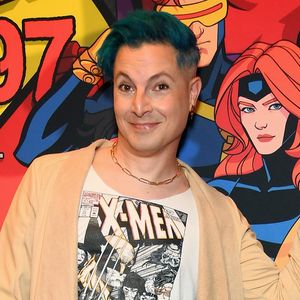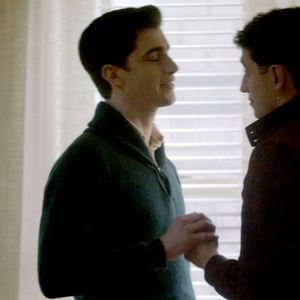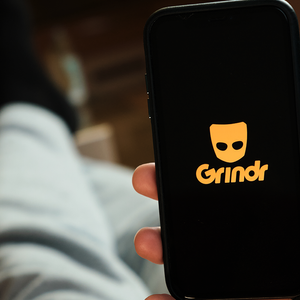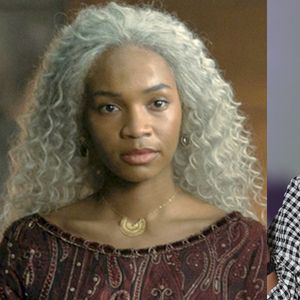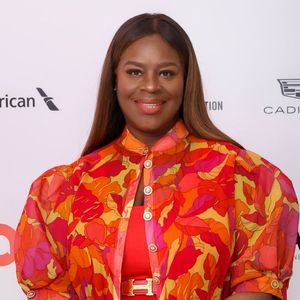CONTACTStaffCAREER OPPORTUNITIESADVERTISE WITH USPRIVACY POLICYPRIVACY PREFERENCESTERMS OF USELEGAL NOTICE
© 2024 Pride Publishing Inc.
All Rights reserved
All Rights reserved
By continuing to use our site, you agree to our Private Policy and Terms of Use.
The airman's dress blues are faded; the footlocker he carried through three tours in Vietnam has gone to rust. Yet the epitaph he chose to mark his grave is still as fresh as today's headlines: ''When I was in the military they gave me a medal for killing two men and a discharge for loving one.''
Leonard Matlovich's medals, uniform, and other personal effects make up the centerpiece of ''Out Ranks,'' a new exhibit in San Francisco that documents the tortured relationship between gay troops and the U.S. military from World War II to the present.
Matlovich, who died in 1988, was a decorated Air Force sergeant who came out to his commanding officer a month before the fall of Saigon, hoping to challenge the government's ban on gay service members. In 1975 the idea of an openly gay combat veteran was incongruous enough to land him on the cover of Time magazine.
The goal of the show is to illustrate that gays have always served their country, often with honor and always under the threat of dishonorable discharge. It opened at the GLBT Historical Society on June 14, Flag Day, as momentum builds in Congress for repealing the ''don't ask, don't tell, don't pursue, don't harass'' policy adopted under President Bill Clinton.
''People are afraid of change. This is not a change,'' said Steve Clark Hall, a U.S. Naval Academy graduate and retired nuclear submarine captain whose story also is told in the exhibit.
Through memorabilia, government documents, and oral histories, the exhibit traces the evolution of public policies on gays in the military. A panel on World War II, for instance, features an article on the psychiatric evaluations used to screen out suspected homosexuals, along with the blue dishonorable discharge papers given to an effete-looking soldier who spent his last days in the Army in a hospital psych ward.
More contemporary examples include a section from the current Uniform Code of Military Justice explaining that oral and anal sex, even among consenting adults of opposite genders, can be considered grounds for a court-martial.
The show also reflects the lives of individual soldiers and sailors who, even more than most, had to give up their personal identities when they put on uniforms--from a brigadier general who did not come out until after his retirement to lesbians who found a sense of belonging in the Women's Army Corps during World War II.
Michael Job, 62, a Vietnam veteran who later founded a peace group for gay veterans, donated a bulletproof Bible, hats, and other items for the exhibit. Job said he enlisted in the Army in 1970 because he feared he might be gay.
''If I go into the military, it means I'm not gay, because they don't take gays in the military; and if I make it, it definitely means I'm not gay,'' Job recalled of his reasoning.
Escaping questions about his sexuality was not so simple, though. Job said when local women were brought into camp to have sex with the soldiers, he had to make up excuses for why he would not get in line. Even now Job said he feels uncomfortable attending support groups with other veterans being treated for post-traumatic stress disorder.
During a successful 20-year career as a naval officer, Hall said he saw sailors above and below him in rank lose their jobs for being gay. For most of that time he was extra careful not to do the same; when he was stationed in San Diego, he drove to gay bars in Los Angeles.
''I left no tracks,'' said Hall, 53. ''I had two names, two phone numbers, two addresses--so I was basically two different people, and I made sure they never met.''
As he rose through the chain of command, Hall said he stopped trying so hard to hide who he was. While working at a naval station near San Francisco, he invited coworkers to parties at his house in the city's heavily gay Castro District. He assumes no one ever tried to out him because he was good at his job.
''A lot of them knew I was gay, but it was like, 'We really don't want to know about that.' They don't want to ask the question,'' he said.
After Clinton was inaugurated and announced he would work to lift the ban on gay service members, Hall said he became more open with his crews, encouraging them to loosen up and have fun, while preaching the importance of respecting people's differences. They got the message about their captain, and from what Hall could tell, they didn't care.
''The thing that really hurts morale and discipline on a ship like a submarine is losing someone because they are gay,'' Hall said. ''It takes months to recover from something like that--to recruit and train someone while two other guys are having to do the work of three people.''
The exhibit was based on interviews with more than 50 gay veterans conducted by Steve Estes, an associate history professor at Sonoma State University, for the Library of Congress Veterans History Project. He tracked down most of his subjects through the gay rights group American Veterans for Equal Rights and the Naval Academy's gay alumni association.
Estes, who published the interviews in a book called Ask and Tell, said he noticed a big difference between the attitudes of older gay veterans and younger ones who ''had gone into the military knowing they were gay'' and were much less fearful about getting found out.
''It wasn't an issue for them--just the military,'' he said. (Lisa Leff, AP)
Want more breaking equality news & trending entertainment stories?
Check out our NEW 24/7 streaming service: the Advocate Channel!
Download the Advocate Channel App for your mobile phone and your favorite streaming device!
From our Sponsors
Most Popular
Here Are Our 2024 Election Predictions. Will They Come True?
November 07 2023 1:46 PM
Meet all 37 of the queer women in this season's WNBA
April 17 2024 11:24 AM
17 Celebs Who Are Out & Proud of Their Trans & Nonbinary Kids
November 30 2023 10:41 AM
Here Are the 15 Most LGBTQ-Friendly Cities in the U.S.
November 01 2023 5:09 PM
Which State Is the Queerest? These Are the States With the Most LGBTQ+ People
December 11 2023 10:00 AM
These 27 Senate Hearing Room Gay Sex Jokes Are Truly Exquisite
December 17 2023 3:33 PM
10 Cheeky and Homoerotic Photos From Bob Mizer's Nude Films
November 18 2023 10:05 PM
42 Flaming Hot Photos From 2024's Australian Firefighters Calendar
November 10 2023 6:08 PM
These Are the 5 States With the Smallest Percentage of LGBTQ+ People
December 13 2023 9:15 AM
Here are the 15 gayest travel destinations in the world: report
March 26 2024 9:23 AM
Watch Now: Advocate Channel
Trending Stories & News
For more news and videos on advocatechannel.com, click here.
Trending Stories & News
For more news and videos on advocatechannel.com, click here.
Latest Stories
Joe Biden admin marks Earth Day with major environmental initiatives
April 22 2024 4:18 PM
Texas Gov. Greg Abbott: 'We want to end' trans and gender nonconforming teachers
April 22 2024 4:13 PM
Nonbinary 17-year-old killed two years after being reported missing
April 22 2024 3:46 PM

Pride
Yahoo FeedIndulge in luxury and sensuality with The Pride Store’s Taurus gift guide
April 22 2024 11:46 AM
The gay man leading the Earth Day Initiative offers hope for the future
April 22 2024 9:00 AM
Pattie Gonia takes drag and fierceness to Capitol Hill to voice environmental concerns
April 22 2024 8:23 AM
Jodie Foster leaves her mark in cement at L.A.'s Chinese Theatre
April 22 2024 7:55 AM
Climate change has a bigger impact on LGBTQ+ couples than straight couples. Here's how
April 22 2024 7:42 AM
Iraq postpones vote on bill punishing gay sex with death
April 20 2024 1:31 PM
Russian poetry contest bans entries from transgender poets
April 20 2024 1:25 PM
Here's who won 'RuPaul's Drag Race' season 16
April 20 2024 1:01 PM
The Tip Off: A beginners guide to the WNBA
April 20 2024 11:06 AM
John Fetterman challenges Pa. school board’s cancellation of talk by gay actor
April 19 2024 2:39 PM
New study finds inadequate response to mpox outbreak
April 19 2024 2:06 PM
Trending stories
Most Recent
Recommended Stories for You






































